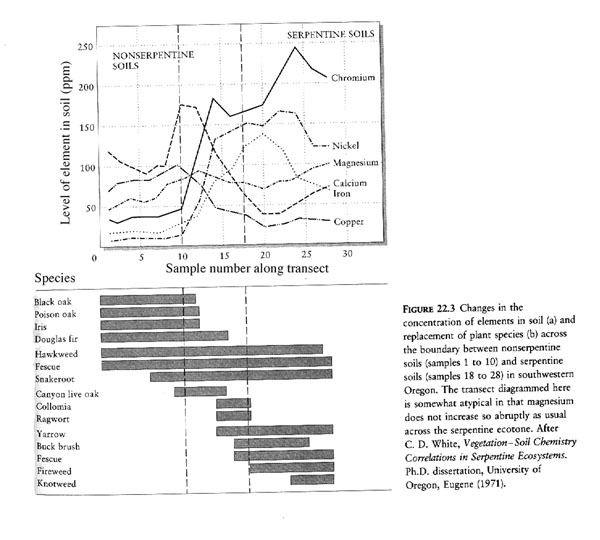
I. Defining characteristics of communities.
A. Associations of plants and animals occurring in a particular locality, dominated by one or more prominent species.
1. Communities can have very sharp physical differences and create well-defined boundaries, called ecotones (ex. aquatic to terrestrial habitats, serpentine vs non-serpentine soil)

2. Communities may not have such distinct boundaries if populations have overlapping distributions along a gradient. Ex of Wisconsin forests.
B. Interactions among populations. Interactions can extend beyond arbitrary spatial boundaries. Ex. Salamanders, arctic terns.
C. Community structure and function creates an intricate web of interactions among species.
II. One way to characterize communities is according to diversity.
A. Species richness: number of species.
B. Indices may weight number of species by relative abundance. Some indices give more weight to rare species.
III. Patterns of diversity.
A. More species occur within large areas of habitat than within small areas. Species-area relationships.
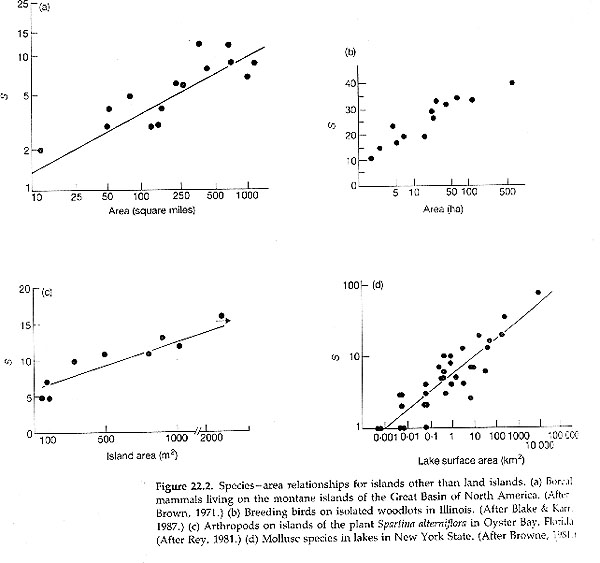
B. Global patterns of species diversity. Number of species increases as latitude decreases. Ex. Bivalves, ants, birds (Greenland = 56, NY 105, Guatemala 469, Colombia 1395), tunicates (100 arctic waters, 400 temperate waters, 600 tropical). Exceptions: tree diversity in North America, aphids, sandpipers.
Bivalves:
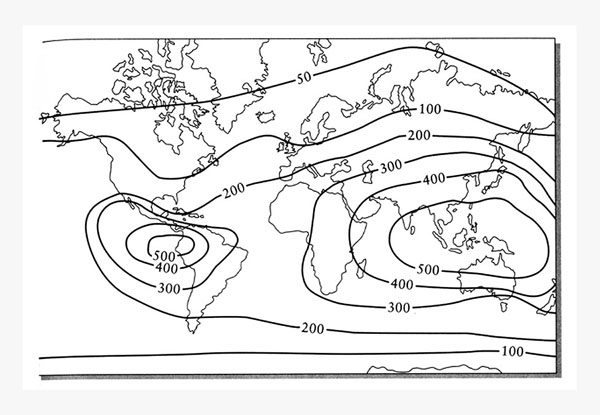
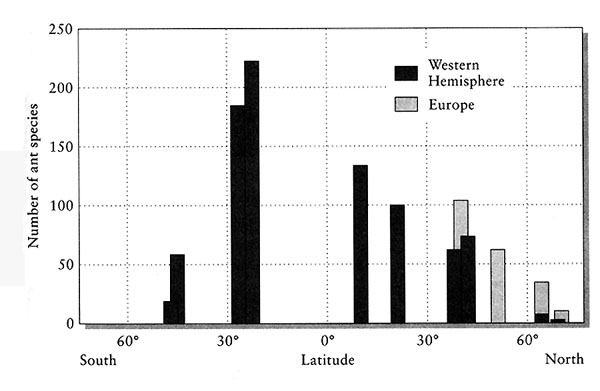
C. Within a given latitude belt, there are also differences in diversity.
D. How explain variation in diversity?
1. Productivity:

2. Spatial heterogeneity: more spatial diversity, potentially more food or shelter for more species of birds
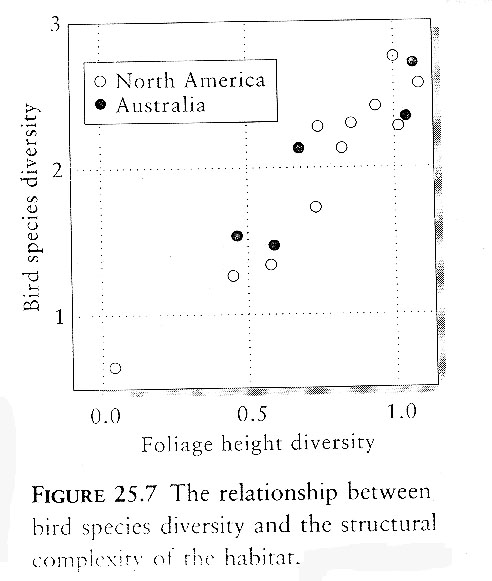
3. Competition: more competition reduces niche breadth, more species pack in. May promote resource partitioning. Ex. Bumble bees

4. Predation holds competition down and more resources remain, more species can coexist.
a. Paine's work in intertidal communities of the Pacific Northwest . Physical disturbances could have similar effects to predation.
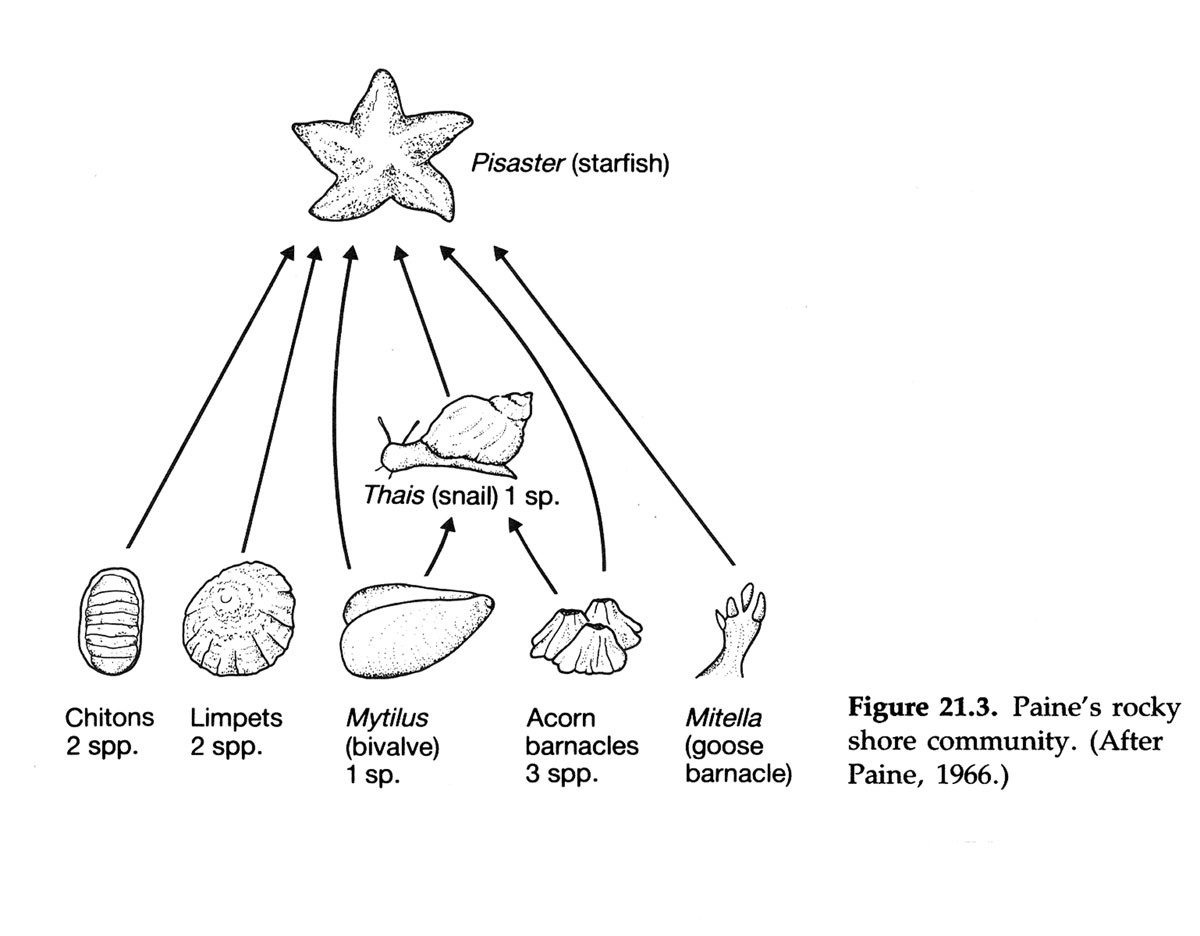
b. A single species that dramatically affects species diversity is often referred to as a keystone species. Keystone species are not necessarily a predator. In the southwestern US gopher tortoises have been regarded as keystone species because their burows provide homes for an array of mice, possums, frogs, snakes and insects.
5. Ecological time: some regions have younger communities due to recent glaciations.
a. Lake Baikal, an ancient unglaciated temperate lake contains a very diverse fauna (580 species of benthic invertebrates) vs Great Slave Lake, a comparable lake in glaciated north Canada, contains only four species in the same zone.
b. Temperate zone forest. Tree species richness is much lower in Europe probably due to recent glaciation combined with barriers to dispersal compared to North America, much of which was unglaciated and fewer barriers to dispersal occur.
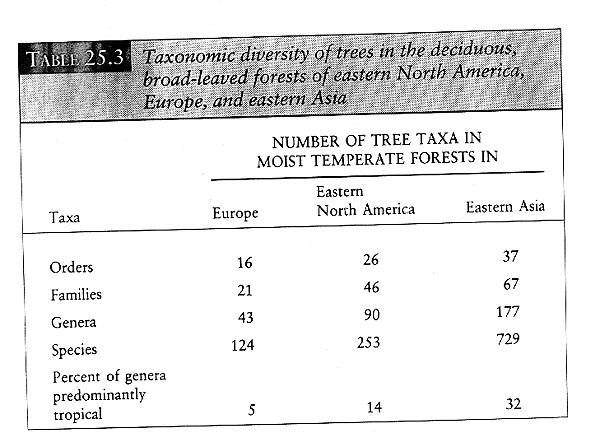
6. Climactic stability: more species will specialize and adapt to small niches. Ex. more species in benthic environments than in shallow areas.
IV. Are communities in equilibrium?
A. An integration of these factors led biologists to postulate that diversity may be regulated by local interactions among species. And, that communities could become saturated with species, and equilibrium, colonization or immigrants into the community would be balanced by extinction.
B. Robert MacArthur and E. O. Wilson in the 1960s developed an equilibrium theory of island biogeography, named because they used an analogy with a hypothetical offshore island. The theory considered the effect of three factors: time, area, and distance.
C. On an offshore island, there is a pool of potential colonist from the nearest continent. Over time rate of immigration decreases, and when all the mainland species occur on the island, the rate is zero. Some species colonize more rapidly and may interfere with subsequent colonists. Similarly, extinction rates increase as the number of species on the island increases. Competition among species on the island probably increases extinction so the extinction curve rises more rapidly as the species number increases. The theory predicts a lower equilibrium species number for smaller islands since these islands are able to support fewer individuals and this would increase the probability of extinction of colonists. The rate of immigration may decrease if an island is farther from the mainland and far islands would also have a lower equilibrium value.
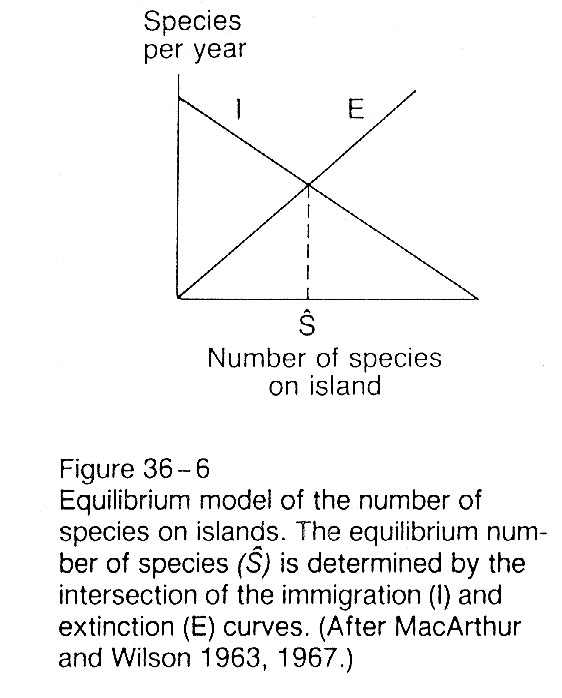

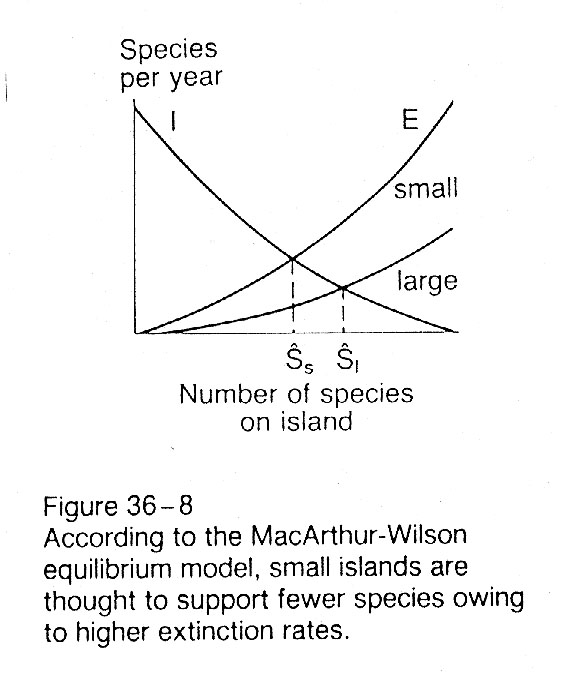
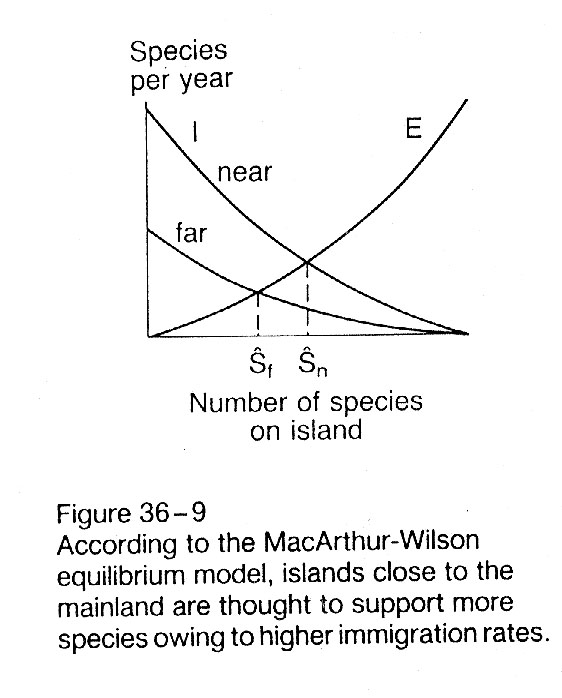
D. Islands can refer to more than land masses in bodies of water.
E. Do islands behave according to the prediction? What happens when there is a change?
1. Krakatoa island blew up after repeated volcanic eruptions. Equilibrium reached at 27 land and freshwater birds. There were disappearances and recolonizations but remained at same number.
2. Experimental studies of arthropods on fumigated mangrove islands.
